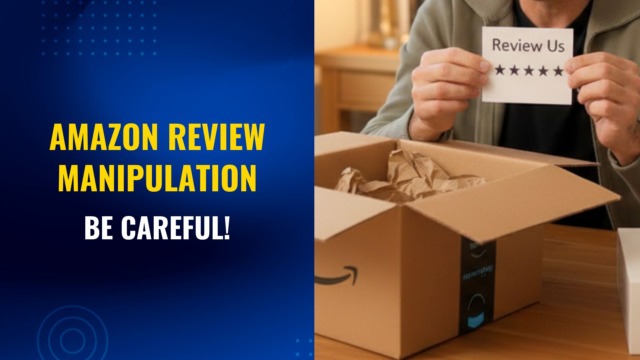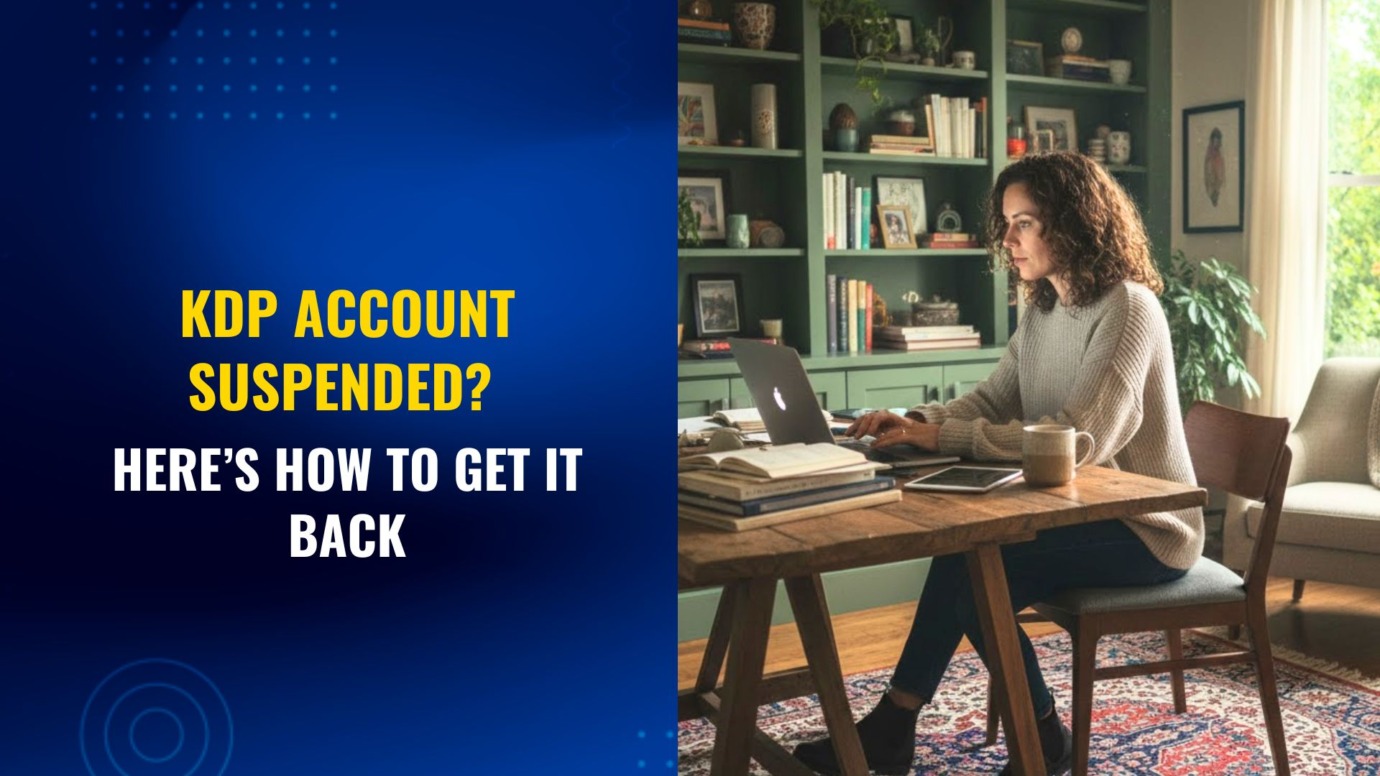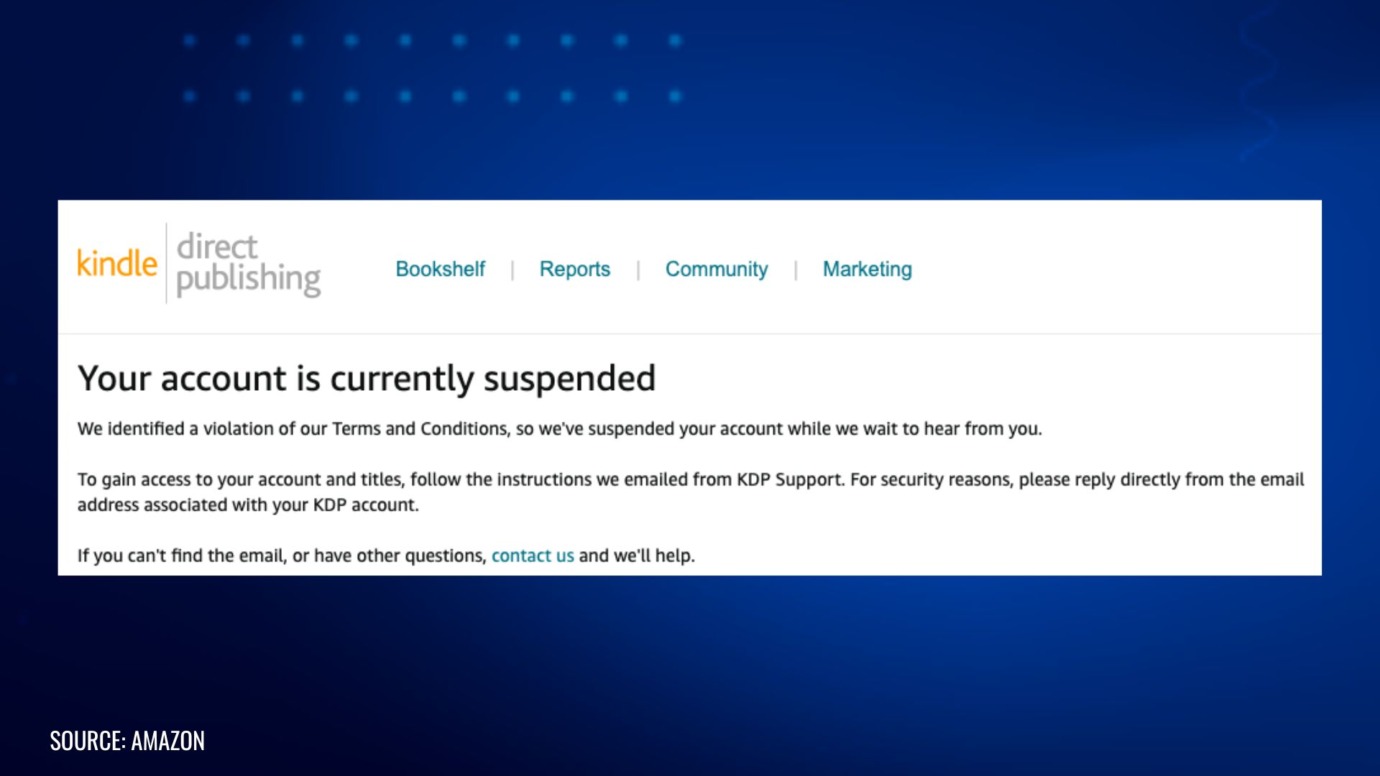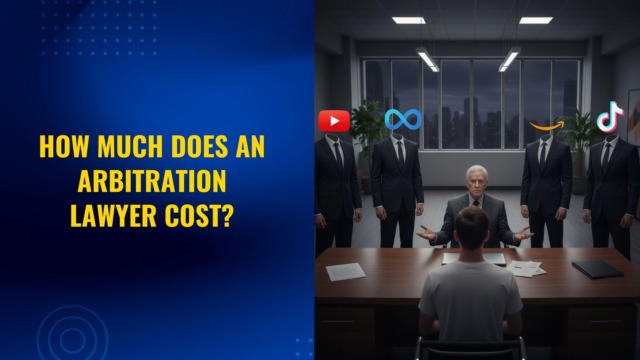
Book a FREE 15-minute consultation with an expert – Book Now
Amazon KDP Account Suspensions: Why They Happen and How to Fix Them

For many self-published authors, Amazon KDP is more than a platform… It’s their livelihood. So when an account suddenly gets suspended, it can feel like everything’s come to a halt overnight.
If you’ve found yourself reading this article, chances are you’ve received that dreaded message from Amazon: your KDP account has been suspended. You’re not alone. Over the past few months, we’ve seen a sharp rise in authors contacting us after suddenly losing access to their Kindle Direct Publishing accounts, often without a clear explanation from Amazon.
The good news is that in many cases, a KDP suspension can be reversed. With the right approach, taken at the right time and in the right order, it’s entirely possible to get your account reinstated and return to publishing.
In this article, we’ll explain why KDP accounts get suspended, what you should (and shouldn’t) do after receiving Amazon’s message, and how to protect your author account from future suspensions.

The Three Levels of Amazon KDP Enforcement
Let’s start by understanding how Amazon handles account issues. When the system detects something unusual with your books or account activity, it can take one of three actions. Each level carries a different level of severity, so knowing where you stand is key to taking the right next step.
1. KDP Warning
A warning is Amazon’s way of saying that something isn’t right, but you still have time to fix it. You’ll usually receive an email explaining what triggered the concern, such as a title that doesn’t match your metadata or a possible copyright issue.
Your account stays active, and if you correct the problem quickly, it often ends there. Ignoring a warning, on the other hand, can lead to a suspension.
2. KDP Suspension
A suspension means your account is temporarily locked. You won’t be able to publish new titles or edit existing ones until the issue is resolved.
For many authors, this happens suddenly and without any prior notice. Suspensions can occur because of repeated policy violations, questionable content, or even errors triggered by Amazon’s automated systems.
Although stressful, a suspension doesn’t necessarily mean your career on KDP is over. With the right plan and a carefully written appeal, reinstatement is often achievable.
3. KDP Termination
Termination is the most serious action Amazon can take. It means your account has been permanently closed, all your titles have been removed from sale, and your royalties may be withheld.
This typically happens after multiple unresolved violations or in serious cases involving plagiarism, review manipulation, or fraud.
While a termination is harder to overturn, it’s not always final. In some cases, professional help from experienced KDP reinstatement or legal experts can make a real difference.
How Amazon’s KDP Algorithm Decides to Suspend Accounts
Because of the amount of information Amazon’s systems have to process, most account actions are not reviewed by a person but by automated systems. The algorithm constantly scans author behavior, publishing patterns, and book data across the KDP platform. It assigns each account an internal “risk score” that increases whenever the system detects potential violations.
If your score exceeds a certain threshold, Amazon’s system may automatically trigger a warning, a suspension, or even a termination. This can happen even when the issue is minor or completely unintentional.
Because these systems are automated, context is often lost. The algorithm cannot distinguish between an honest mistake and deliberate misconduct. That is why some authors face harsh penalties for minor errors.
Common Reasons for Amazon KDP Account Suspensions
1. Content-Related Issues
Amazon’s priority is maintaining a high-quality experience for readers. Content that violates its publishing standards is one of the most common reasons for suspension. This includes:
- Low-quality or AI-generated books that contain errors, poor formatting, or minimal value for readers.
- Plagiarism or duplicate content copied from other books or online sources.
- Offensive or prohibited material such as hate speech, violent imagery, or explicit sexual content that violates Amazon’s content policies.
2. Metadata Violations
Many authors and publishers don’t know that the book’s presentation and data can trigger problems. Metadata includes your book’s title, subtitle, keywords, and description – all of which must be accurate and consistent. Common violations include:
- Copyright or trademark misuse, such as using protected brand names without permission.
- Title mismatches, where the text on your book cover doesn’t match the details entered in your KDP dashboard.
- Misleading information, including exaggerated claims or irrelevant keywords that misrepresent your book.
3. Account Behavior Violations
Some suspensions result from how an author manages their account rather than the books themselves. Examples include:
- Operating multiple KDP accounts without prior approval from Amazon.
- Manipulative or deceptive practices, such as buying fake reviews, using click farms, or offering incentives for ratings.
- Breaking KDP Select exclusivity, by publishing your enrolled eBook on other platforms during the exclusivity period.
How to Prevent a KDP Account Suspension
You can significantly reduce the risk of suspension by following these best practices:
- Study Amazon’s KDP guidelines – especially those on metadata, quality, and prohibited content.
- Publish only original content or material you have full rights to use.
- Use accurate keywords and categories that reflect your actual book content.
- Ensure all book details match exactly: Title, subtitle, and cover text should be identical.
- Don’t ignore email notifications: watch for messages from Amazon’s KDP team and act on them promptly.
- Honor KDP Select exclusivity if your eBook is enrolled in the program.
What to Do If Your Amazon KDP Account Gets Suspended
If your account has been suspended or terminated, it’s stressful – but not hopeless. Here’s what you should do next:
Step 1: Read Amazon’s Email Carefully
Start by reviewing the suspension or termination notice in full. Amazon usually explains why the action was taken. It could relate to content violations, misleading metadata, copyright concerns, or unusual account activity. Take note of every detail, as your response must directly address the issue they mention.
Step 2: Gather Evidence
Before responding, collect all relevant documentation to support your case. This may include proof of copyright ownership, publishing rights, agreements with contributors, or email correspondence showing your compliance. Organizing your materials before appealing helps you respond clearly and credibly.
Step 3: Write a Professional Appeal
Make sure that your appeal letter is concise, polite, and factual. Start by acknowledging Amazon’s concern, then briefly explain what happened and what you’ve done (or will do) to correct it. Focus on solutions and compliance, not emotion or blame.
Your Plan of Action should be clear and concrete. This is the section of your appeal where you demonstrate that you understand the issue, have corrected it, and have put measures in place to prevent it from happening again. Amazon expects each part of your plan to answer who, what, when, where, why, and how. Include:
- Root Cause: Explain why the issue happened and take responsibility.
- Corrective Actions: Describe what you did to fix it, who did it, and when.
- Preventive Measures: Show how you’ll prevent it in the future, who is responsible, and how it will be monitored.
Keep your appeal brief and focused, since Amazon representatives have limited time to review it.
Step 4: Wait for Review
After submitting your appeal, be patient. Amazon’s review process can take several days or even weeks. Avoid sending multiple appeals or repeated follow-ups unless specifically requested, as doing so can slow down your case and create confusion.
Pro tip: Always keep records of your books, publishing rights, and communication with Amazon. These can be critical if your account is ever questioned.
Professional Amazon KDP Reinstatement Support for Authors
If your appeal has been denied or you’re uncertain how to move forward, don’t face it alone. Our team has extensive experience with Amazon KDP reinstatement and publishing rights, and we’ve helped many authors get their accounts restored.
We can review your case, identify the underlying issues, and prepare a strong, effective appeal. Contact us to discuss your situation and take the next step toward getting your KDP account reinstated.
Amazon’s KDP suspensions aren’t always fair, but ultimately, they make the rules.
Amazon KDP can sometimes make decisions that feel unfair, but it’s their platform and they set the standards. Losing access to your account can be a serious setback, yet most suspensions can be prevented with the right approach.
Focus on publishing genuine, high-quality books, use accurate metadata, and always follow Amazon’s content and policy guidelines. These steps not only reduce the risk of suspension but also strengthen your reputation as a trustworthy author or publisher.
At the heart of Amazon’s system is a commitment to reader trust and content integrity. When you keep that in mind and align your publishing practices with those values, you’re not just protecting your account – you’re building a lasting, respected presence on the Kindle platform.
Legal Disclaimer: The articles published on our platform are for informational purposes only and do not constitute legal advice in any form. They are not intended to be a substitute for professional legal counsel. For any legal matters, it is essential to consult with us or a qualified attorney who can provide advice tailored to your specific situation. Reliance on any information provided in these articles is solely at your own risk.
Amazon Brand Registry – Discover for Free if You’re Eligible
Increase Your Chance of Getting a
Trademark to 96%
Subscribe to Our Newsletter
Sign up to receive valuable information on E-Commerce and intellectual property

